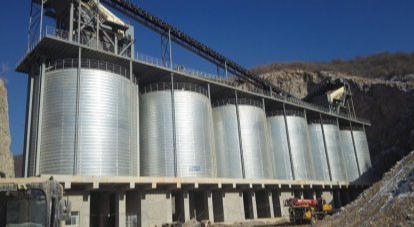
You should protect calcined coke whether you export or import it. With the proper storage system you can minimize the risk of spontaneous ignition and fugitive gases. This system should be reliable, self-checking and have electronic controls. To avoid oxidation, it must be capable of maintaining temperature. It is also advisable to use steel silos instead of piles. The coke won't be affected by the weather.
It is produced as a result of refining oil. It is usually made from heavy crudes which need more coking. A delayed coking unit is typically used for these processes, as shown in the schematic flow diagram below. The residual crude is then pumped into the drums of coke, where under pressure and high temperatures it will carbonize. Delay coking is the process that results in green petroleum coke. GPCs can be converted into CPCs for anode use or used as fuel in aluminum remelters.

The calcination procedure transforms the coke’s physical attributes, improving bulk density as well as electrical conductivity. Coke goes through a series of different thermal zones during the calcination. These include devolatalizations, demoisturizations, and densifications. After calcination, it can be applied to many different applications. The most common use for calcined petroleum coke is in the primary aluminum industry. It is also used as a raw material to manufacture titanium dioxide.
The calcined coke also contains high amounts of leachable and polycyclic aromatic hydrocarbons. It is possible to release the volatile compounds by grinding the material. However, it could also lead to the degradation of the coke and its break-down into smaller pieces, resulting in an explosion.
In order to comply with any environmental restrictions, the process of calcination must be closely monitored. All operations should also be recorded. This allows for the quick identification of any problems or irregularities, and helps ensure that the calcination process is running within the required parameters.
Monitoring the calcination process can also identify issues with gaseous pollutants, such as nitrous oxides and volatile organic compounds, and allow for remedial actions to be taken quickly. As these pollutants are bad for both human and environmental health, it is vital to reduce their emissions.
The use of CPC rotary/shaft blending is increasing as a result. The trend will continue as SO2 emission limits tighten. More calciners are adding SO2 scrubber systems due to the demand for blend. In addition to meeting air quality regulations, these systems can improve performance by minimizing the need for blending. The higher-quality blends can be used to reduce the quantity of raw materials required. Ultimately, this can lower production costs and lead to greater profitability for smelters.

Write a Message